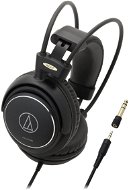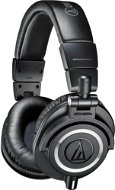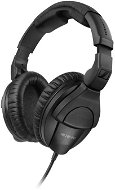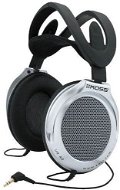

What is Hi-Fi and How To Choose a Hi-Fi Headphones
Hi-Fi sound technology, or Hi-Fi headphones are no longer necessarily expensive, and therefore less accessible products. This quality technology, offering top sound reproduction that satisfies even the most demanding customers by meeting high quality standards, can be purchased even at lower prices. But does actually hi-fi stand for? What to focus on if we want to really enjoy quality listening experience with no compromise? In this article, we will answer these questions and discuss what is really important in the field of Hi-Fi headphones and what to look out for when choosing the right ones.

What is Hi-Fi and How to Choose Hi-Fi Headphones - CONTENTS
- What is Hi-Fi?
- Basic concepts: frequency range and impedance
- Design and construction of headphones
- Wired vs. wireless transmission
- Codecs ensure wireless compatibility
What is Hi-Fi?
The abbreviation Hi-Fi stands for "high-fidelity" and has been used since the 1960s, when the DIN 45 500 standard saw the light of the day and has been used ever since to indicate high fidelity of acoustic signal reproduction. The standard specifies the lower limit of parameters for products labeled as Hi-Fi. It cannot be considered a complex indicator of quality, but it creates a kind of a boundary between everyday consumer products and those designed for more demanding listeners.
Although this term is still used among listeners and electronics manufacturers and it carries a clear meaning, a term "hi-end audio" is increasingly emerging nowadays. This is mainly due to the fact that nowadays most audio equipment easily exceed the original standard.
The standards, which determine whether a device can use the Hi-Fi label, precisely specify noise and other forms of harmonic and non-harmonic distortion, for example undesirable changes in the reproduction of the audio signal.
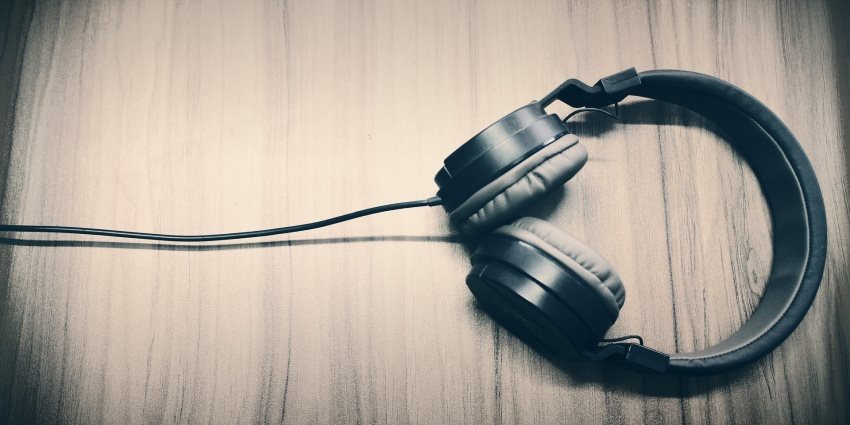
Basic Concepts: Frequency Range and Impedance
To fully understand what Hi-Fi is, how it works and what to focus on when choosing Hi-Fi headphones, we need to explain two key concepts which determine how the headphones will play. These are frequency range and impedance.
Frequency range
From the point of view of physics, sound is a mechanical wave of a certain frequency (number of oscillations per certain time unit), which is given in Hertz (Hz). The frequency that a person is able to perceive is quite individual and ranges from approximately 16 to 20,000 Hz, and this range decreases with age. What is below this level is called infrasound, above this level is ultrasound.
The frequency range can be found among the basic parameters of headphones. In this case, it indicates what sounds and what frequencies the headphones are able to process. For Hi-Fi headphones, it usually ranges from 20 to 20,000 kHz.
Frequency range (or frequency response) display the course of individual frequencies of sound in time. Rarely do we encounter a single, isolated amplitude. The resulting sound that we perceive when listening, whether it is music, the spoken word, or what we hear from our surroundings as ordinary noise, consists of several intertwining layers. In the resulting frequency range, the frequencies that have the least influence on the resulting composite course are most noticeable. A single look at the frequency range will reveal how the headphones will play.

As shown in the figure above, the graph can be divided into five zones. The widest part of the graph, about its first third, is occupied by depths - the lowest frequencies. This is followed by lower midrange, midrange and higher midrange, which gradually transition to heights. The narrowest zone represents the higher midrange (about only a third of the depth), which fluctuate at a frequency of around 5,000 Hz.
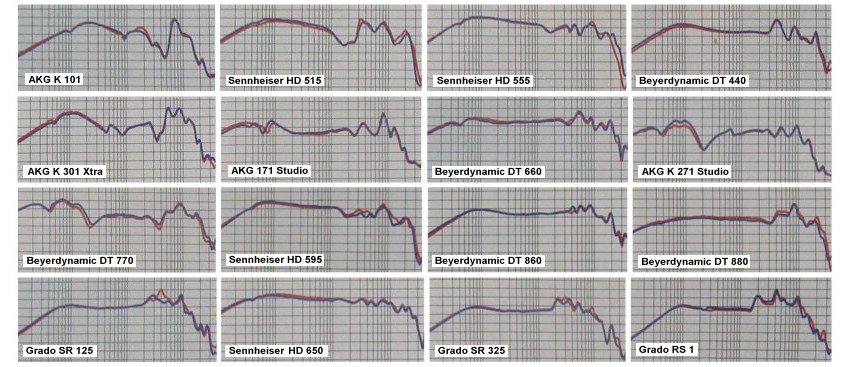
In the picture above we can see the frequency range of sixteen headphones (the graph is from 2018). Frequencies are recorded on the X axis, with depths, mids, and heights listed from left to right. The Y axis represents the amplitude - its deviation depending on the given frequency.
So it can be said that if the left side of the range is placed higher, these headphones would have strong bass and vice versa. The higher graph on the right indicates headphones with a sharper, treble sound. The ideal is a balanced curve without significant fluctuations on one side or the other.
Impedance
Impedance is a physical quantity describing the resistance of a component and the phase shift of voltage against the current as the alternating current of a given frequency flows. It expresses basically the same as a physical quantity known as an electric current. However, unlike impedance, this only applies to direct current.
One could say that the ratio between voltage and current is also known as resistance. That is right, the impedance even has the same unit, ohm. But there are both of these components in phase. In the case of impedance, they are out of phase with each other. This means that they have a different starting point.
How does this affect the sound of the headphones?
- Headphones with a lower impedance will flow more current and will play louder, but with a potentially greater risk of distorting the resulting sound.
- Headphones with higher impedance will flow less current. They will not be so loud and there is a lower risk of possible sound distortion.
In practice, this means that if we would like to connect quality headphones with high impedance to a mobile phone, for example, they would play very quietly. Therefore, higher impedance is usually a feature of high-quality headphones, which allow for an intermediate step in the form of an amplifier.
Design and Construction of Headphones
The construction and design of the headphones fundamentally affect the design and user comfort when wearing them. At the same time, it should be noted that if we require maximum quality from the headphones, ideally confirmed by the abbreviation Hi-Fi, we can immediately exclude earbuds from the selection by design. Their shape itself simply doesn't allow the use of high-quality hardware which could be considered as hi-fi.
In terms of design of the headphones, we have two categories as follows:
- On-ear headphones (supraaural) - their advantage is usually a light construction. As the name suggests, they are placed on the ears, which makes it harder to isolate the surrounding noise. They may be less comfortable when worn for longer periods.
- Over ear headphones (circumaural) - are synonymous with large Hi-Fi headphones and sturdy gaming headsets. They enclose the ears entirely, which allows the perfect isolation of the surrounding noise. They offer quality, undisturbed listening, although they are heavier and less practical for carrying around.
If we consider the construction of headphones, we can choose between three groups:
- Open - The advantage of open-design headphones is more faithful sound reproduction with less distortion. On the other hand, the open structure allows the sound to leak, so you might disturb your surroundings by listening to loud music.
- Closed - Closed headphones offer better isolation from distracting sounds from the outside, so you can enjoy undisturbed listening to music even on a busy street. At the same time, the sound doesn't leak out.
- Semi-open - this is a compromise solution. Although it prevents you from being disturbed by the surroundings to some extent, the sound will leak out.
ANC, Active Noise Cancellation
In the chapter above, we mentioned several times that some types of headphones isolate ambient noise better than others. That is called a passive noise cancellation. In recent years, the ANC, active noise cancellation, has become a standard part of headphones. The principle is basically simple. It disrupts undesired sounds by putting another sound in their way, which eliminates them. To remove unwanted noise, it uses the same sound waves as the disturbing sound, but the opposite frequency. If both of these sounds come together, they will cancel each other out.
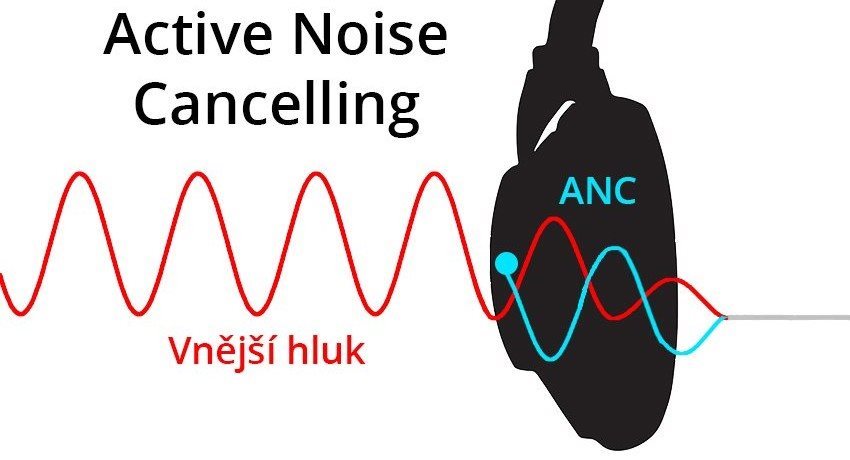
The sounds with a shorter wavelength are the easiest to eliminate. This means that the ANC works best, for example, in public transport or in the office, in general for sounds with a lower frequency. In the case of sudden noises, such as a honking ambulance, a scream, etc., the system usually does not have time to adapt and such sounds reach the ears. In practice, active noise cancellation works by using a microphone, which picks up ambient noise, evaluates it and then adds a signal with the opposite amplitude to the sound stream. This technology is definitely a great asset to high-quality listening.
Wired vs. Wireless Transmission
Although the concept of Hi-Fi is still associated with classic, wired headphones, we can already find some wireless models on the market that support the playback of high-quality sound. Streaming services such as Tidal, offering lossless LAC-based 16-bit/44.1 kHz audio compression, which matches CD quality, definitely help.
It depends not only on the quality of the music files played, but also on the source, or rather the compatibility of codecs (see below) between the source device (not necessarily a mobile phone, there are also amplifiers or record players on the market that send the signal wirelessly) and headphones. However, even today, there is always some degradation of the audio signal when the music is transmitted wirelessly. With quality equipment on both sides, however, the degradation won't be that strong and even sticklers for sound quality will be satisfied.

An interesting option is headphones with a detachable cable. For listening outdoors, it is possible to enjoy the freedom of wireless use, and when at home, you can use the supplied cable to connect them to an amplifier or to an external sound card in a computer.
Codecs Ensure Wireless Compatibility
If you are planning to purchase wireless headphones, you need to ensure that the headphones and devices are compatible, which means that there is the same support for specific codecs on both sides. These are used to decode the audio signal, and as strange as it may seem, it is by no means the rule that every device supports all codecs.
The most commonly used codecs include:
- aptX - is one of the oldest codecs used in Bluetooth wireless audio transmission. It uses compression, which reduces signal latency. It supports 16-bit/48 kHz LCPM with data transfer up to 352 kbps and is considered lossy compression. It is best compatible with lossy MP3 format and is widely supported across Android devices.
- aptX HD - this is the HD version of the above aptX. It is currently owned by Qualcomm and can be found in more expensive devices that are equipped with this company's chipset. It supports high-resolution 24-bit/48 kHz data transmission with a maximum transfer rate of up to 576 kbps. On the other hand, the resulting sound quality is affected by a lower bit rate. There is also a variant of this aptX HD codec LL, where the abbreviation LL means low latency, which reduces the latency to an almost unrecognizable 40 ms.
- SBC - SBC (sub-band coding) is the basic codec that Bluetooth supports. It represents the lowest possible transmission quality and rather the necessary lowest class that is supported across devices. However, with quality headphones, even SBC will play fairly well.
- AAC - The AAC (Advanced Audio Codec) is used in Apple devices, it is also the basic compression format for the free version of YouTube. Qualitatively, AAC is comparable to the MP3 format, but the bit rate reaches up to 250 kbps. The disadvantage of AAC is the higher energy consumption, which has a negative effect on the battery life of wireless headphones.
- LDAC - The LDAC codec was developed by Sony. Its biggest advantage is the variable bitrate, which reaches values of up to 990 kbps. Support among mobile device manufacturers is not very wide, many devices require access to more complex settings to enable the use of the codec. But if you succeed, you have three times the transfer rate that SBC can offer.
- LHDC - Low Latency High Definition Codec was created in cooperation with Hi-Res Audio (HWA) Union and Savitech. It has a similar transfer rate as LDAC (900 kbps) and a sample rate of up to 96 kHz. Very low latency is also a plus.

- How to connect headphones (INSTRUCTIONS)
- Impedance tells you how the headphones will be compatible with the player
- Best Headphones 2020
- How to choose the best record player
- New HyperX Stinger Family line - gaming headphones for all players
- Samsung Galaxy Buds Live: design headphones in the shape of beans
The Hi-Fi headphones are designed for the most demanding listeners. They meet high demands on sound reproduction, offer the highest quality components and, of course, they are priced accordingly. Along with the studio headphones, Hi-Fi headphones are among the most expensive. On the other hand, you can easily use them with your home audio system.
